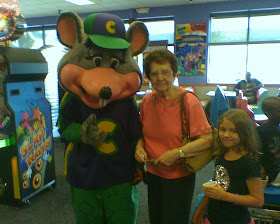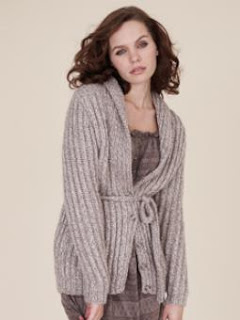Okay, you know the drill: here's what I read in May and June of this year....comments and suggestions always welcome.
I started out May by reading a couple of books in series that I already knew and liked. First up was
A Red Herring Without Mustard,
by Alan Bradley, the third Flavia de Luce book. I love this quirky series, featuring an eleven-year-old British girl who loves chemistry and hates her big sisters, puttering around a wreck of a manor house in the days following WWII. In this installment, Flavia goes to the village fair intending to have her fortune told by a suitably mysterious Gypsy -- and ends up burning the entire fortunetelling tent down. Mortified, Flavia invites the fortuneteller to park her caravan on Flavia's family's land -- at least until the woman recovers from the smoke she inhaled. During the course of the novel, Flavia discovers who is behind a brutal assault and a murder, investigates the theft of local antiques, and looks into the mystery of a disappearing baby. Very entertaining and enjoyable.
Heartstone
and an earlier book (
Sovereign), by C.J. Sansom, are part of the Tudor mysteries featuring a hunchbacked lawyer named Matthew Shardlake. I like these mysteries because they are very well-written, with terrific historical detail and great depth of character. In
Heartstone, Shardlake has to untangle two complicated mysteries while England prepares for possible invasion by the French;
Sovereign is an earlier installment in the series in which Shardlake accompanies King Henry VIII on a progress to York. I liked both, and am sorry I'll have to wait another year or two for the next sequel.
The Tiger's Wife
by Tea Obreht. This was an uncharacteristic impulse purchase for me, after it was highly recommended by the owner of an independent bookshop. It's a foray into magical realism, in which a young doctor, living in a country that sounds a lot like Yugoslavia or Serbia, tries to work through her grief and loss at her beloved grandfather's death, in part by recounting various folk tales that he used to tell (one involves a tiger, hence the title). It is absolutely staggering when the youth of the author registered with me -- she is so young, and that this is her first book is incredible. I enjoyed the book and found it compelling, and was glad I took a chance on it.
While I was breaking out of my mystery rut, I took advantage of the Amazon Vine program to procure a free copy of
22 Britannia Road
, also a first novel, by Brit Amanda Hodgkinson. This book is a very affecting story about a couple whose lives are fractured by World War II. Silvana and Janusz are a Polish couple married in the early days of the war. Janusz joins the army, and they are separated for six years. When Janusz finally finds Silvana and their son, he has resettled in England and wants to become as English as he can, looking to the future as a way to get over the past. Silvana and their son Aurek have endured so much in their six years away from Janusz that they are strangers to him. The novel follows their attempts to start a new life together while coping with the unspeakable things each has experienced.
I got a little cocky after breaking out of my rut, and decided to try another free Vine selection that was uncharacteristic for me:
Leeches
by David Albahari. The plot concerns a writer who witnesses a man slapping a woman and finds himself obsessed with the incident, trying to figure out who the woman is and what happened to her. I should have known better; the book is written in a single paragraph (yes, all 300-some pages continue without a single paragraph break), employs a stream-of-consciousness approach (which I usually loathe), and take lengthy forays into issues relating to Jewish identity and the Kabbalah. It meanders, has an unreliable narrator and is absurdist. I hated it. My bad.
I did try another free Vine book, but stuck more to my traditional choices and opted for
The Woodcutter
by Reginald Hill (who writes the Dalziel and Pascoe series). This was a stand-alone thriller, and although it was completely conventional by comparison to some of the other stuff I'd read, it was a perfect beach book -- lots of plot, suspense and intrigue, even if not very realistic. Ditto for
The Poison Tree
by Erin Kelly, which I found at the library. I'd read a good review of this somewhere, and found it to be another plot-heavy, suspenseful thriller, with plot lines that went back and forth from the past to present.
One of the things I've been enjoying in the past year is trading books with my 13-year-old -- it seems like there have been so many really well done books classified as "young adult." He recommended
The Westing Game
by Ellen Raskin to me. I remember reading
The Mysterious Disappearance of Leon (I Mean Noel)
by the same author as a kid, and liking it, so I gave it a try. It's a quick read, in which a mysterious man builds a fancy apartment complex and then rents it out to a very specific group of people -- a female judge, a podiastrist who moonlights as a bookie, a family that runs a restaurant, a dressmaker....When the mysterious man dies, he leaves his fortune to whichever resident of the building can untangle his puzzle. I enjoyed this book, which won the Newbery award. I learned (by reading the forward to the book) what an interesting woman Ellen Raskin was -- not only was she an award-winning author but she was an illustrator, too, and designed covers for many books (including the first edition of
A Wrinkle in Time).
If you are a bibliophile like me, then one of the best things about reading is discovering a new series or author that you really love, and then working your way through the books they've written. I had the good fortune to discover a few new authors and mystery series.
Amazon has been recommending Aaron Elkins to me for a while, so I found one of the earlier books in his Gideon Oliver series,
The Dark Place
. Gideon Oliver is a forensic anthropologist called in to consult by the FBI. A body (really, a skeleton) has been found and it looks old. There is a spear point embedded in the bones, which intrigues Oliver: he wonders what kind of incredible strength was required to wield a spear so powerfully. Oliver has to untangle the mystery of the murder, set against the backdrop of the forests in the Olympic peninsula of Washington. Lots of atmosphere and a quick read, too.
First Drop
by Zoe Sharp was another book recommended to me. It's out-0f-print, I think, but my library was able to order a copy on inter-library loan. This book features Brit Charlie Fox, a former special forces veteran who joins her ex-boyfriend's security company. Her first job is flying to Florida to protect the nerdy teenage son of a software executive. The book is extremely fast-paced and exciting. Part of the charm is seeing how Charlie builds a relationship with the teenager she's guarding, while trying to protect his life.
The Shape of Water
by Andrea Camilleri, is the first of a series of books featuring Sicilian detective Inspector Montalbano. Amazon has been recommending this series to me for a while, and I finally gave it a try. Now I'm hooked. Montalbano is a funny, quirky detective -- impatient, brilliant, cynical, scheming -- and in this book, he is presented with a body locked in a car, pants down. But not all is what it seems, and Montalbano -- along with his amusing co-workers -- get to the bottom of things. Part of the charm of this book is the character of Montalbano; it's hard to come up with a truly original protagonist for a mystery series and yet Camilleri has done so. Another aspect of the books that's interesting is the Sicilian setting (there are actually notes in the back, added by the excellent translator, that explain some of the regional references a non-Italian might not get).
So there you have it: what I read in May and June. Don't be afraid to leave a comment or suggestion (I don't bite!).





































